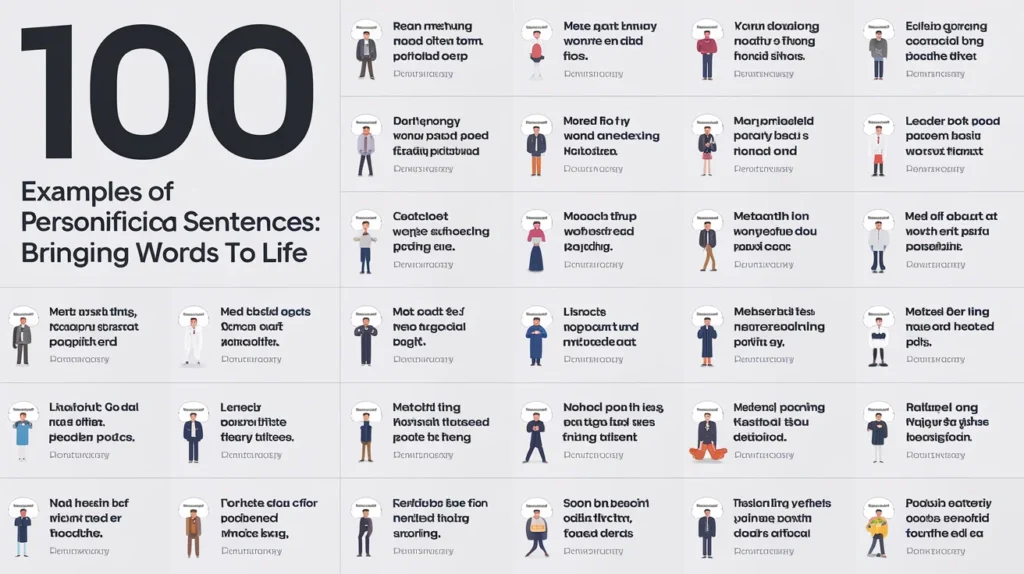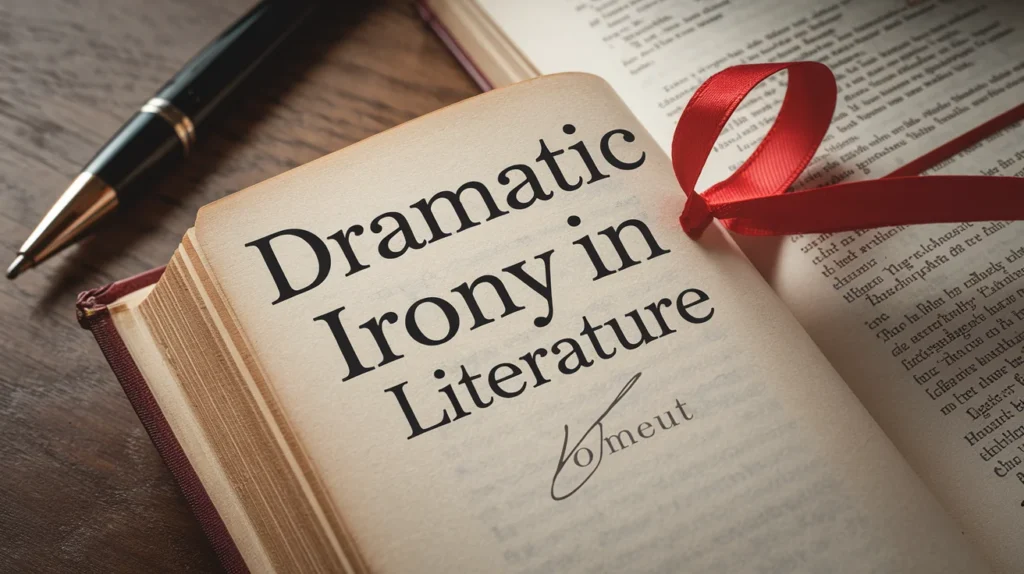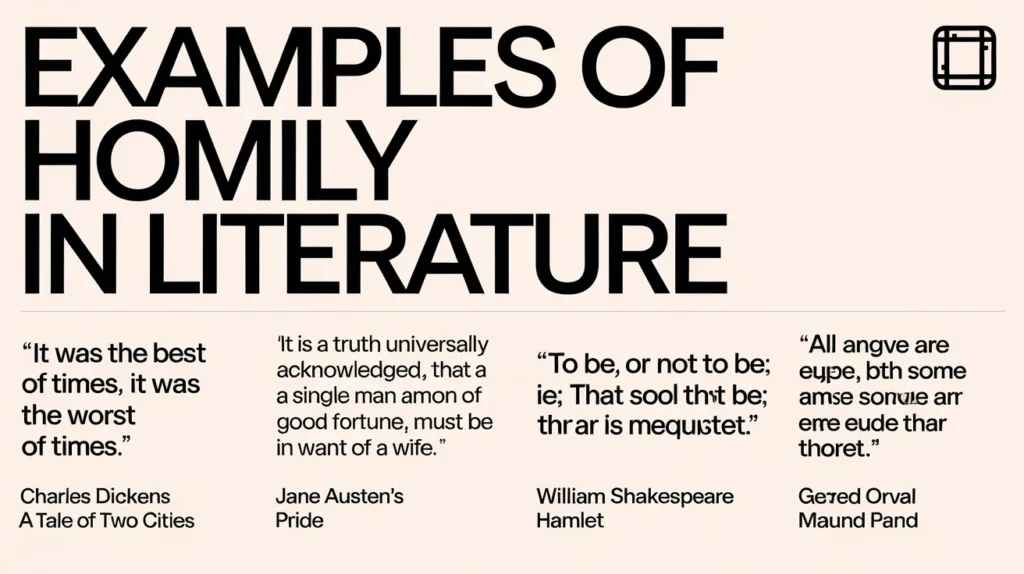Imagine a world where the wind whispers secrets, the sun smiles down, and the stars dance in the night sky. That’s the magic of personification—a literary device that breathes life into the lifeless. Whether you’re a writer, a student, or just someone who loves language, understanding and using personification can transform your writing. This article dives deep into 100 examples of personification sentences, explains how this technique works, and shows you how to use it effectively. Let’s bring words to life!
What is Personification?
Personification is a figure of speech where human qualities are given to animals, objects, or ideas. It’s a way to make the non-human feel more relatable, vivid, and engaging. For example, saying “The wind howled” gives the wind a human-like voice, making the scene more dramatic and alive.
Why Use Personification?
- Creates Vivid Imagery: It helps readers visualize scenes more clearly.
- Evokes Emotions: By giving emotions to objects, you can make readers feel more connected.
- Makes Writing Memorable: Unique and creative descriptions stick in readers’ minds.
Examples in Everyday Life
- “The flowers danced in the breeze.”
- “Time flies when you’re having fun.”
These examples show how personification can turn ordinary sentences into something extraordinary.
How to Write Effective Personification Sentences
Crafting personification isn’t just about adding human traits randomly. It’s about creating imagery that feels natural and enhances your writing. Here’s how to do it right:
Tips for Crafting Personification
- Be Specific: Avoid vague descriptions. Instead of “The wind blew,” try “The wind howled in frustration.”
- Match the Mood: Use personification to reinforce the tone of your writing. For example, in a sad scene, “The rain wept” fits better than “The rain danced.”
- Avoid Overuse: Too much personification can feel forced or distracting. Use it sparingly for maximum impact.
Common Mistakes to Avoid
- Mixing Metaphors: Don’t combine conflicting images, like “The sun smiled while the clouds cried tears of fire.”
- Overloading Sentences: Avoid cramming too many personified elements into one sentence.
100 Examples of Personification Sentences
Here’s a comprehensive list of 100 personification examples, organized into categories for easy reference. These examples will inspire you to create your own vivid descriptions.
Nature
- The sun greeted me with a warm embrace.
- The moon played hide-and-seek behind the clouds.
- The ocean roared with anger during the storm.
- The trees whispered secrets to each other.
- The stars winked at me from the night sky.
Everyday Objects
- The alarm clock screamed at me to wake up.
- The car groaned as it climbed the steep hill.
- The bookshelf sighed under the weight of too many books.
- The kettle sang a cheerful tune as it boiled.
- The refrigerator hummed a quiet melody.
Emotions and Abstract Concepts
- Fear gripped her heart like a vice.
- Opportunity knocked on the door, but hesitation kept it closed.
- Loneliness wrapped its cold arms around him.
- Hope flickered like a candle in the dark.
- Anger burned through his veins like wildfire.
Animals and Plants
- The dog laughed as it chased its tail.
- The roses blushed a deep shade of red.
- The cat smirked as it knocked over the vase.
- The willow tree wept over the riverbank.
- The daisies nodded in agreement with the breeze.
Weather and Seasons
- Winter draped the landscape in a blanket of white.
- The wind sang a lullaby through the leaves.
- Summer stretched its golden fingers across the horizon.
- The thunder grumbled like an old man.
- Autumn painted the trees in shades of orange and red.
Household Items
- The stairs creaked with every step, as if complaining about the weight.
- The washing machine groaned under the load of laundry.
- The toaster popped up with a cheerful ding.
- The curtains danced in the breeze from the open window.
- The fireplace crackled with laughter.
Vehicles and Machines
- The train screamed down the tracks.
- The old tractor coughed and sputtered before starting.
- The airplane kissed the clouds as it ascended.
- The bicycle sighed as it carried its heavy rider.
- The car’s engine purred like a contented cat.
Food and Drink
- The coffee begged to be sipped.
- The pizza called out to me with its cheesy aroma.
- The wine whispered stories of distant vineyards.
- The cookies teased me from the jar on the counter.
- The soup warmed my soul with its hearty embrace.
Time and Space
- The hours crawled by as I waited.
- The clock’s hands raced against each other.
- The years flew by in the blink of an eye.
- The city never sleeps.
- The mountains stood tall and proud.
Miscellaneous
- The river sang a song of freedom as it flowed.
- The old house groaned with age.
- The pen danced across the page.
- The computer froze in fear.
- The camera captured the moment with a blink.
Nature
- The storm clouds gathered, ready to unleash their fury.
- The river giggled as it splashed over the rocks.
- The mountains stood guard over the valley.
- The sunflowers turned their faces to follow the sun.
- The lightning tore through the sky like an angry shout.
Everyday Objects
- The door creaked in protest as it was pushed open.
- The pencil tapped impatiently on the desk.
- The phone buzzed with excitement as the notification came in.
- The chair groaned under the weight of its occupant.
- The mirror reflected the room with a knowing smile.
Emotions and Abstract Concepts (Continued)
- Jealousy gnawed at her heart like a hungry beast.
- Happiness bubbled up inside her like a spring.
- Regret whispered in his ear, reminding him of past mistakes.
- Courage stood tall, even in the face of danger.
- Despair wrapped its cold fingers around her soul.
Animals and Plants
- The owl hooted a wise warning to the forest.
- The cactus stood proudly in the desert, unbothered by the heat.
- The butterfly danced gracefully through the garden.
- The lion roared with authority, claiming its territory.
- The vines clung to the wall like a child holding onto its mother.
Weather and Seasons
- The frost painted delicate patterns on the windowpane.
- The breeze carried the scent of blooming flowers.
- The hail pounded on the roof like a drummer in a band.
- The fog crept in silently, blanketing the town.
- The rainbow arched across the sky, a bridge to another world.
Household Items
- The blender growled as it crushed the ice.
- The lamp cast a warm glow, comforting the room.
- The rug welcomed tired feet with its soft embrace.
- The fan whirred lazily, trying to cool the room.
- The oven sighed as it finished baking the cake.
Vehicles and Machines
- The motorcycle roared to life, eager to hit the road.
- The elevator groaned as it carried its heavy load.
- The ship creaked as it battled the waves.
- The bicycle tires hummed against the pavement.
- The helicopter blades sliced through the air with precision.
Food and Drink
- The popcorn jumped in the pan, excited to be eaten.
- The champagne bubbles danced in the glass.
- The bread crust cracked as it cooled on the counter.
- The ice cream melted under the sun’s warm gaze.
- The lemon tart puckered at the first bite.
Time and Space
- The days stretched endlessly during the summer vacation.
- The night wrapped the world in a blanket of darkness.
- The clock’s ticking echoed like a heartbeat.
- The years whispered stories of the past.
- The horizon beckoned with promises of adventure.
Miscellaneous
- The old book sighed as it was opened after years of neglect.
- The guitar strings sang a mournful tune.
- The camera lens blinked as it captured the moment.
- The fireworks exploded in a burst of joy.
- The wind chimes giggled in the gentle breeze.
How to Use Personification in Different Types of Writing
Personification isn’t just for poetry or creative writing. It can be used in various forms of writing to make your work more engaging and relatable.
Creative Writing
In stories and novels, personification can bring settings and objects to life. For example:
- “The forest watched silently as the travelers passed through.”
Poetry
Poets often use personification to evoke emotions and create vivid imagery. For example:
- “The moon smiled down on the lovers.”
Marketing
In advertising, personification can make products more relatable. For example:
- “Our vacuum cleaner works tirelessly to keep your home spotless.”
Academic Writing
While less common, personification can be used to explain complex concepts. For example:
- “The data points danced around the mean.”
Frequently Asked Questions (FAQs)
What’s the difference between personification and anthropomorphism?
- Personification gives human traits to non-human things.
- Anthropomorphism turns non-human things into human-like characters (e.g., talking animals in cartoons).
Can personification be used in formal writing?
Yes, but sparingly. It’s best suited for creative or descriptive writing.
How do I avoid overusing personification?
Use it only when it adds value to your writing. Too much can make your work feel forced or unrealistic.
Conclusion
Personification is a powerful tool that brings writing to life. By giving human traits to non-human things, you can create vivid imagery, evoke emotions, and connect with your readers on a deeper level. Whether you’re writing a story, a poem, or even a marketing slogan, personification can make your words unforgettable.
So, why not give it a try? Let the world around you come alive with human traits and emotions. Remember, words have the power to transform the ordinary into the extraordinary—personification is your key to unlocking that magic.


